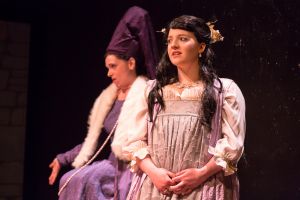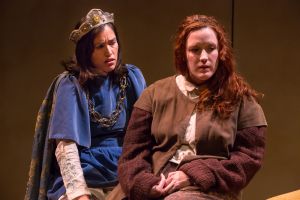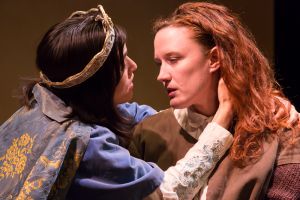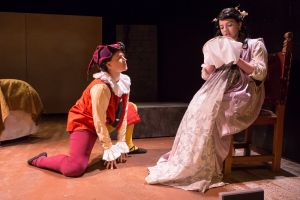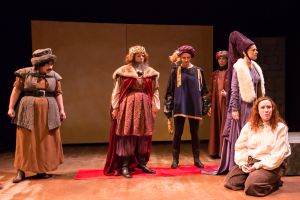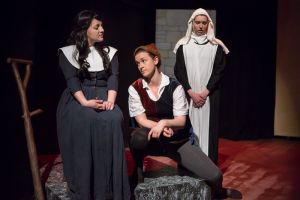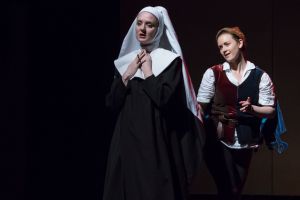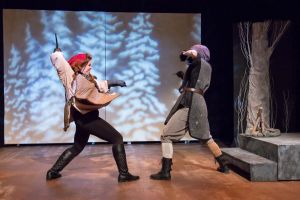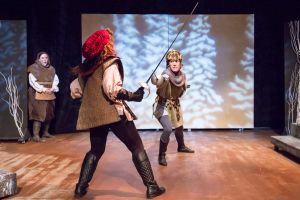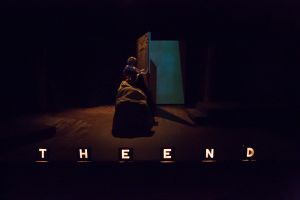Joan Kane, the director of this play, also directed of one of the pieces in Nylon Fusion’s last This Round’s On Us: Spring Break Forever! (The first three images in the gallery for TROU – Spring Break Forever!) She and her partner at Ego Actus reached out to me about shooting their production of The Tragedy of Dandelion at Urban Stages. The play is a bold undertaking — 29 roles played by 10 women across 5 acts, 13 scenes and 12 locations. Oh, and in verse! From the playwright’s website:
The Princess Dandelion dresses as a boy in order to escape her rapist and would-be husband, along the way falling in love with another princess, and traveling through her society, meeting nuns, soldiers, and clowns, and all the time her pregnancy continues, the impending birth complicating everything.
The play takes a lot of familiar tropes and stands them on their ears to defy expectation. Shakespeare allusions abound, but there is a serious through line about identity and the ever present danger of being a female in a male dominated society.
Urban Stages is a small showcase theatre (65 – 74 seats) with a fairly deep stage. The producer and director both told me they needed wide shots that would highlight the scenery and costumes for their website, so I tended to work a little wider on this shoot, again favoring the 24-70 mm f/2.8 with my new standby, the 16-35 mm f/2.8 coming in second. The 70-200 mm f/2.8 still saw duty and got some of my favorite shots.
Lighting was widely varied — from a well lit throne room to a dark, dank dungeon cell — but most challenging were the scenes where the space was strongly defined by the lighting, for instance a hallway defined by a strong diagonal lane of light across the stage. The actors had obviously not had much time to acclimate to the lighting and were frequently half in and half out of the light. This resulted in their heads and torsos in shadow and their belt and below strongly lit. It took some work with the gradient filter tool in Lightroom to save what could be saved.
Ultimately, this is one of the challenges with working with a show so early in its life and especially showcase productions that don’t have the leisure of more than one or two runs on the stage before opening night; the actors are still trying to figure out their environment.
